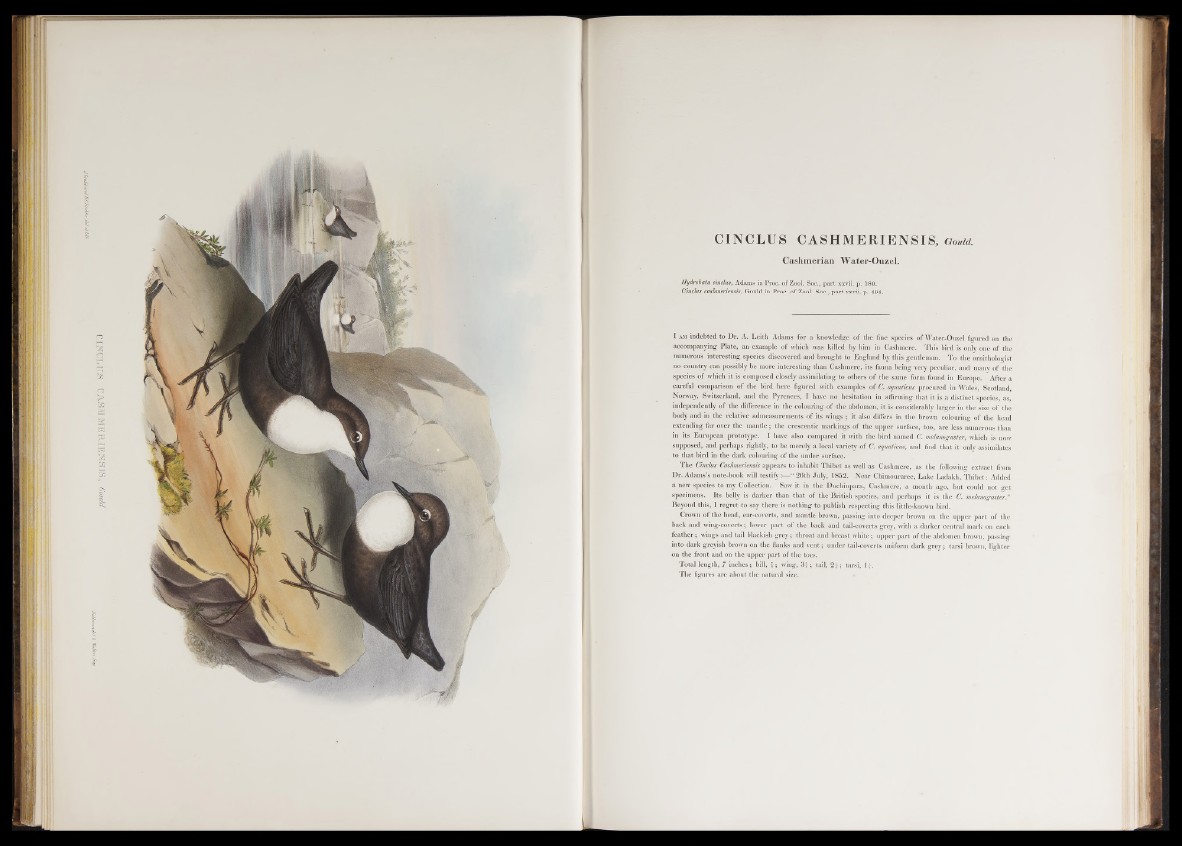
CINCLUS CASHMERIENSIS, Gould.
Cashmerian Water-Ouzel.
Hydrobata cinclus, Adams in Proc. of Zool. Soc., part xxvii. p. 180.
Cinclus cashmeriensis, Gould in Proc. of Zool. Soc., part xxvii. p. 494.
I a m indebted to Dr. A. Leith Adams for a knowledge o f the fine species of Water-Ouzel figured on the
accompanying Plate, an example of which was killed by him in Cashmere. This bird is only one of the
numerous interesting species discovered and brought to England by this gentleman. To the ornithologist
no country can possibly be more interesting than Cashmere, its fauna being very peculiar, and many of the
species o f which it is composed closely assimilating to others of the same form found in Europe. After a
careful comparison of the bird here figured with examples of C. aqmticus procured in Wales, Scotland,
Norway, Switzerland, and the Pyrenees, I have no hesitation in affirming that it is a distiuct species, as,
independently o f the difference in the colouring of the abdomen, it is considerably larger in the size of the
body and in the relative admeasurements of its wings ; it also differs in the brown colouring of the head
extending far over the mantle; the crescentic markings of the upper surface, too, are less numerous than
in its European prototype. I have also compared it with the bird named C. melanogaster, which is now
supposed, and perhaps rightly, to be merely a local variety o f C. aqmticus, and find that it only assimilates
to that bird in the dark colouring of the under surface.
The Cinclus Cashmeriensis appears to inhabit Thibet as well as Cashmere, as the following extract from
Dr. Adams’s note-book will testify:—“ 26th July, 1852. Near Chimouraree, Lake Ladakh, Th ib e t: Added
a new species to my Collection. Saw it in the Duchinpara, Cashmere, a month ago, but could not get
specimens. Its belly is darker than that o f the British species, and perhaps it is the C. melanogaster.”
Beyond this, I regret to say there is nothing to publish respecting this little-known bird.
Crown o f the head, ear-coverts, and mantle brown, passing into deeper brown on the upper p art o f the
back and wing-coverts; lower p art of the back and tail-coverts grey, with a darker central mark on each
feather; wings and tail blackish grey; throat and breast white; upper p art of the abdomen brown, passing
into dark greyish brown on the flanks and vent; under tail-coverts uniform dark grey; tarsi brown, lighter
on the front and on the upper part o f the toes.
Total length, 7 inches; bill, ■£; wing, 3 f ; tail, 2-j-; tarsi, 1-y.
The figures are about the natural size.